News
2021 Space Odyssey - Part 1
Mars, Asteroids, New Telescope to Succeed Hubble
So Many Space Science Topics to Watch Out For!
Updated in March 2021
The return of the asteroid explorer "Hayabusa2" was a big topic at the end of 2020. Following on from this excitement, we can take a closer look at various other endeavors related to space science in 2021, particularly topics centered around solar system spacecrafts. In addition to news on arrivals and departures of both Martian and asteroid probes from various countries, the launch of the successor to the Hubble Space Telescope, as well as lunar exploration projects are all in the works. Here are some of the main projects that are likely to be realized by the end of the year.
Arriving on Mars One after Another─Helicopter Flight Experiment Ready to Go
In February, the following three spacecrafts will arrive on Mars: the United Arab Emirates (UAE) orbiter "Hope" will be placed into orbit on February 9 local UAE time; the US rover "Perseverance" will land on February 18 US Eastern Time; and China's "Tianwen-1", which consists of an orbiter and a rover, will arrive on Mars within February.
Mars and Earth draw close to each other only about once every two years. For this reason, rovers going out to Mars leave during this brief window in order to take advantage of the shorter flight distance. This is why all three spacecrafts, including Hope─which launched aboard the Japanese H2A rocket─left Earth in July 2020.
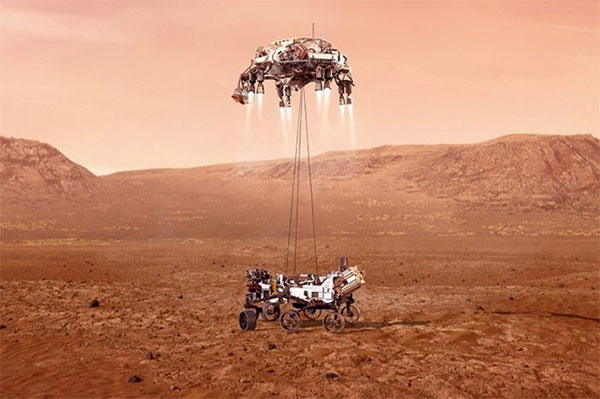
The rover “Perseverance” is the successor to “Curiosity.” Perseverance will land in a Martian crater that was once a lake to search for signs of life that could have once existed on Mars. The rover will conduct geological surveys and experiments to produce oxygen from carbon dioxide, which makes up most of the planet’s atmosphere. The team will also experiment with a helicopter flying in Mars’ diluted atmosphere. This will be the first powered aircraft to fly on another planet.
NASA is also considering having Perseverance take samples of Martian soil and put them in a container. In the early 2030s, another spacecraft may collect it and bring it back to Earth. NASA is working with European teams to devise a method to shoot up the samples from the surface of Mars to a recovery machine in the sky. Japan is also planning to collect a sample from the Martian satellite Phobos and bring it back to Earth by 2029. This mission is scheduled for 2024.
Hope is the first planetary probe from an Arab nation, and its mission is to deepen understanding about the Martian atmosphere and climate. And in December 2020, China succeeded in collecting the country's first astronomical sample with the lunar probe "Chang'e No. 5." Space enthusiasts are watching for whether the country will achieve equally impressive results with Tianwen-1─the first step to reaching planets in our solar system.
Full-scale Investigation of Hayabusa2 Samples
The U.S. version of the Hayabusa-like spacecraft, "OSIRIS-REx" will depart from the asteroid "Bennu" in March. Following Hayabusa2, it succeeded retrieving a sample in October last year. If the sample can be recovered back on Earth, the US will become the second country to successfully complete a sample-return mission on an asteroid. OSIRIS-REx will return to Earth in September 2023. As with Hayabusa2, sample analyses are expected to help solve mysteries surrounding solar system formation and the origin of life.
Meanwhile, Hayabusa2, which delivered a capsule containing samples of the asteroid "Ryugu" to Earth in December 2020, is heading for the asteroid "1998KY26", aiming for a 2031 arrival. On the 5th of January, three ion engines that accelerate the aircraft were turned on for its steady navigation.
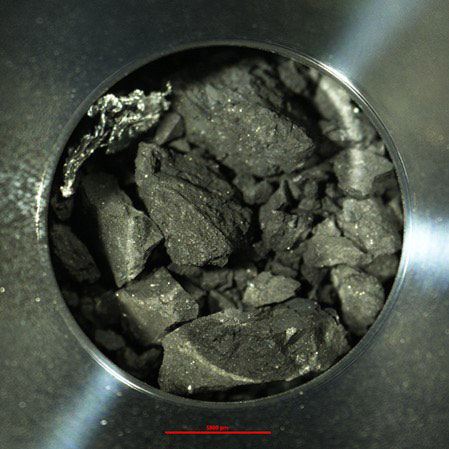
Investigation of the samples brought back by Hayabusa2 is in full swing. The team succeeded in recovering about 5.4 grams of samples, far more than the minimum of 100 milligrams assumed in the plan. Now the samples are managed by the Institute of Space and Astronautical Science (ISAS - Sagamihara-shi, Kanagawa Prefecture) of the Japan Aerospace Exploration Agency (JAXA). Prior to detailed classification, basic observation and recording work is ongoing and will continue until around June. During this stage, each grain of the sample will be investigated in great detail. After that, the sample will be handed over to researchers in Japan and abroad through open calls for research plans, and will also be provided to NASA based on a mutual cooperation agreement with OSIRIS-REx. The Hayabusa2 team will start the analysis first, around June of this year.
In space science, more attention tends to be paid to the latest news regarding the movements of space probes like Hayabusa2. Conversely, the observation data delivered to Earth by the spacecraft will be analyzed by researchers over the course of years, and will accumulate as scientific knowledge in the form of academic papers and treatises. Researchers from around the world are still working through rocks collected by the United States’ Apollo program half a century ago. We should not forget about these steady efforts by researchers.
A New Journey to Another Asteroid
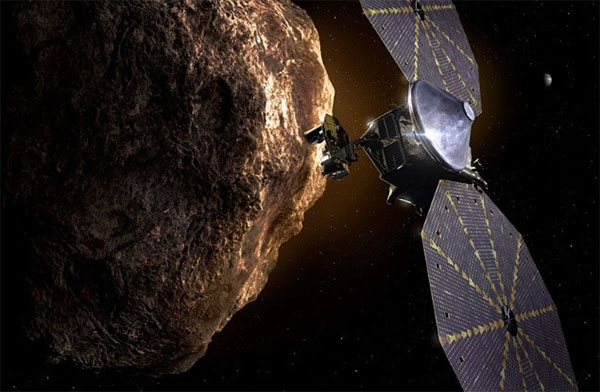
The United States’ new small asteroid explorer "Lucy" will leave Earth in October. It plans to approach seven of the 6,000-plus small planetary bodies (mostly asteroids) called "Trojans," many of which gather in the orbit of Jupiter. Prior to that, Lucy will explore small asteroids between orbits of Mars and Jupiter. After a long twelve-year journey, the probe will investigate different types of asteroids and explore the mystery of the formation of our solar system. Lucy will not collect samples or return to Earth like Hayabusa2.
Additionally, another US spacecraft will head to an asteroid, but the purpose here is not a scientific quest, but rather an experiment in "planetary defense." Planetary defense is a field of space science that tries to prevent damage to Earth from collision with celestial bodies. The name of the project is DART (Double Asteroid Redirection Test). The smaller of a binary asteroid pair will be intentionally hit by the spacecraft, with the goal of shifting the asteroid’s orbit upon impact. What will be tested in this experiment is the technology’s ability to maneuver. In the future, when and if a celestial body is likely to collide with Earth, scientists can avoid crises by hitting the object with a spacecraft so that its orbit is redirected away from Earth. The experimental aircraft will be launched on July 22 and will collide in September 2022.
There is a reason for choosing a pair of asteroids as the target. If the orbit of the smaller asteroid shifts due to the collision with the spacecraft, the regularity of the brightness change in conjunction with the asteroid it orbits will change. These changes will be observable from Earth, allowing scientists to measure the size of the collision. Humans need to improve their technology to prepare for the risk of unknown celestial bodies colliding with the Earth. The asteroid in this experiment poses no risk of collision.
New Eyes to Observe Early Universe
The launch of the "James Webb Space Telescope," which is being jointly developed by the United States, Europe and Canada is planned for October 31st. It will be the successor to the Hubble Space Telescope.
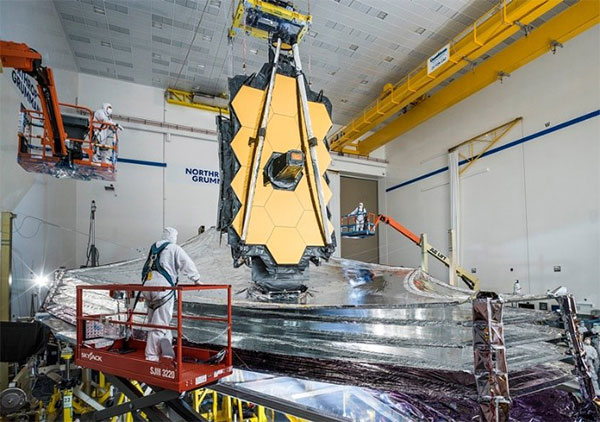
In contrast to Hubble, which mainly uses visible light, the James Webb Space Telescope specializes in infrared light. This is because the light from the early universe─targeted for observation─arrives from a far distance over many years. During the light’s long journey, the wavelength stretches and its visible light shifts into infrared light. This telescope will be useful for better understanding the history of the universe by observing galaxies and stars from just 200 million years after the birth of the universe 13.8 billion years ago. There are high expectations for research on observing extrasolar planets and exploring the possibility of alien life.
However, due to its complicated structure and flaws in development, R&D costs have ballooned significantly, provoking severe criticism. The mission has been postponed many times since its initial planned launch in 2007. In July 2020, due to COVID-19 and technical issues, the launch was again postponed until October this year.
Luna: A Moon-bound Spacecraft with Heritage
Russia's ITAR-TASS news agency released an article on New Year's Day saying that a representative of the country's space development corporation "Roscosmos" mentioned the lunar probe "Luna 25" would be launched later this year. If realized, it would be the country’s first lunar exploration in 45 years, ever since the former Soviet unmanned probe "Luna 24" brought samples back to Earth in 1976.
According to sources from the Russian Academy of Sciences Space Research Institute and the European Space Agency (ESA), the main exploration target is the polar region of the moon. Two years after the lander Luna 25, the orbiter No. 26 will be released—and the year after that, Luna 27. Luna 28 will aim to bring samples back to Earth. European counterparts will cooperate with on-board observation equipment, guidance systems, and with providing sampling devices on Luna 27.
A large-scale manned program to explore and develop the Moon is underway through US-led international cooperation. In recent years, promising evidence of water has been discovered in the polar regions of the Moon, and countries are paying attention with an eye to future resource utilization. Under these circumstances, Russia has revived the probe name “Luna” from the 1950s, showing its strong will to keep up with international momentum. Although Russia is a space science powerhouse, its spectacular solar system exploration culminated with the Venus-Halley comet probes in the mid-1980s. After that, the country tried to explore Mars, but results were disappointing aside from the 2016 Mars orbiter, which succeeded in cooperation with Europe. The whole world is watching to see if Russia can restart its quest.
India and Japan Gaze at the Moon
India is aiming to launch "Chandrayaan-3" by the end of 2021. It consists of a lander and a rover. This will be the first attempt since Chandrayaan-2, whose orbiter was successful but whose rover failed to land on the lunar surface in 2019. A successful landing would have made India the fourth country to land on the moon after the former Soviet Union, the United States, and China. In addition, there are several private-sector lunar landing plans around the world that are trying to reach the moon by the end of the year.
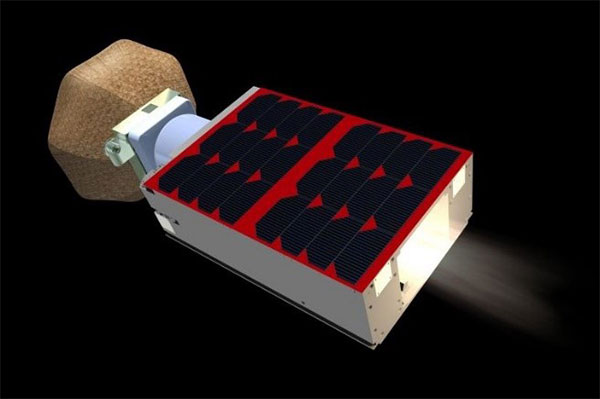
This news is still flying under the radar, but a Japanese spacecraft may also reach the surface of the moon this year. Its name is "Omotenashi". The literal meaning of Omotenashi is “hospitality.” It is derived from the acronym "Outstanding MOon exploration TEchnologies demonstrated by NAno Semi-Hard Impactor." JAXA's proposal for Omotenashi has been selected as one of the 13 micro-spacecrafts that will be loaded onto the huge American rocket SLS (Space Launch System) together with the its unmanned test vehicle. SLS is now planned for launch by the end of 2021. Orbit control technology demonstrators developed by the University of Tokyo and Nihon University will also be on board.
The 14-kilogram Omotenashi satellite is equal to the size of a parcel you could send in the mail. It aims to land on the moon along with the world's smallest spacecraft. However, due to restrictions in specification, it is not possible to make a soft landing like Apollo. It will instead be a "semi-hard landing." The spacecraft will collide with the lunar surface at a speed of several tens of meters per second. (Note: Soft landings take place at a speed of about 2 meters per second.) We can predict that the spacecraft will receive a rather rough and inhospitable welcome.
Original article from JST’s Science Portal website
Translated by SSC Secretariat







